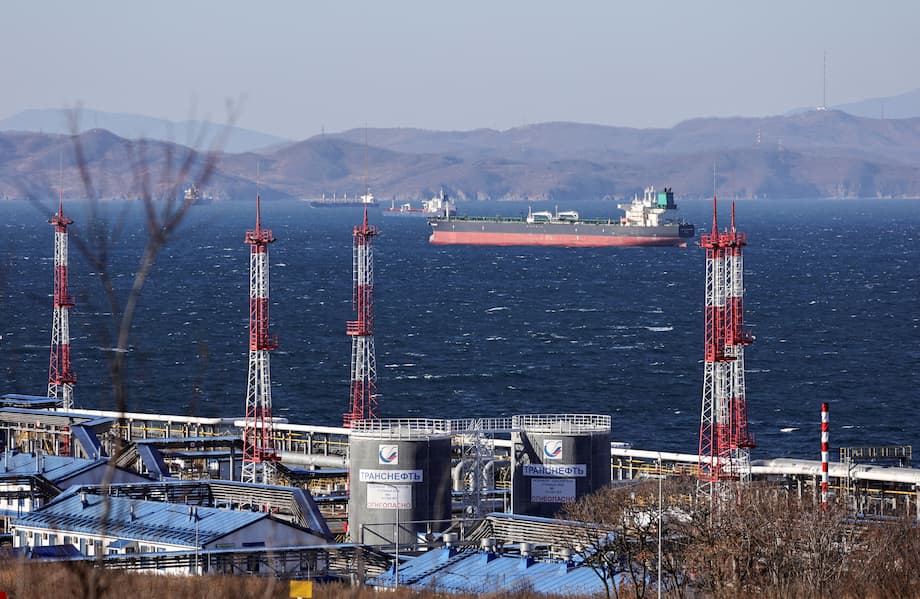China Steps Up Russian Oil Imports as US Tariffs Hit India: Geopolitics, Trade, and the Future of Global Energy Flows
In a dramatic shift in global energy markets, Chinese refineries have ramped up purchases of Russian crude oil that would traditionally have been destined for India. This realignment comes as India, once Russia’s fastest-growing oil customer, sharply reduces its imports in response to a new wave of US tariffs. The move underscores the complex interplay between geopolitics, trade policy, and energy security in a world still grappling with the fallout from Russia’s 2022 invasion of Ukraine.
- China Steps Up Russian Oil Imports as US Tariffs Hit India: Geopolitics, Trade, and the Future of Global Energy Flows
- How US Tariffs Reshaped the Asian Oil Market
- China Seizes the Opportunity: New Orders, New Routes
- Why Is the US Targeting India but Sparing China?
- Russia’s Dilemma: Losing Its Biggest Asian Customer
- Geopolitical Calculations: Trade, Leverage, and the Shadow of Ukraine
- What’s Next for Global Oil Markets?
- In Summary
How US Tariffs Reshaped the Asian Oil Market
For much of the past two years, India and China have been the twin engines driving demand for Russian oil. After Western sanctions and embargoes cut Russia off from its traditional European markets, Moscow turned east, offering steep discounts to keep its oil flowing. India, in particular, emerged as a crucial buyer, importing up to 1.7 million barrels per day—over a third of its total crude needs—from Russia by mid-2024. China, the world’s largest oil importer, also increased its intake, with Russian crude accounting for roughly 13.5% of its imports.
This delicate balance was upended in July 2025, when US President Donald Trump announced a new round of tariffs targeting countries that continued to buy Russian oil. India was hit especially hard: a 25% tariff on its exports to the US was doubled to 50%, affecting key sectors such as textiles, gems, auto parts, and seafood. The White House justified the move by accusing India of “profiteering” from discounted Russian oil and undermining efforts to isolate Moscow over its war in Ukraine.
India’s response was swift. State-owned and private refiners paused new orders, and imports of Russian crude plummeted. According to data from Kpler, a commodities analytics firm, shipments of Russia’s flagship Urals crude to India fell from an average of 1.18 million barrels per day earlier in the year to just 400,000 barrels per day in August—a threefold drop. Nayara Energy, India’s third-largest refinery and a major buyer of Russian oil, received only four cargoes in August, with no further deliveries expected before month’s end.
China Seizes the Opportunity: New Orders, New Routes
With India scaling back, Chinese refiners moved quickly to secure the surplus Russian oil. By mid-August, at least 15 cargoes—each carrying between 700,000 and 1 million barrels—had been booked for delivery to China in October and November. Notably, many of these shipments will originate from Russia’s Arctic and Black Sea ports, routes that typically supply India due to their proximity. This marks a significant shift in trade flows, as China usually imports Russian crude from the Far East port of Kozmino.
Market analysts say the move is opportunistic. Russian grades were trading at least $3 per barrel below comparable Middle Eastern supplies, making them attractive to Chinese buyers. Muyu Xu, a senior crude oil analyst at Kpler, explained, “Right now is still a very good opportunity, because over in India, Trump is still pressing hard on them. Taking advantage of this opportunity while prices are low, I think more refineries will probably consider buying more, within a week or two.”
Bloomberg data shows that China’s purchases of Urals crude nearly doubled in August compared to the year’s average, reaching about 75,000 barrels per day. Still, this is only a fraction of the volume India has relinquished. Experts agree that while China can absorb some of the surplus, it cannot fully compensate for India’s reduced demand. “If India keeps holding off on buying, that’s going to be a real problem for Russia—China just can’t take on all of India’s volume by itself,” Xu noted.
Why Is the US Targeting India but Sparing China?
The US administration’s decision to hit India with steep tariffs while sparing China—the largest buyer of Russian oil—has raised eyebrows in diplomatic and energy circles. President Trump has publicly threatened secondary sanctions and tariffs of up to 500% on countries buying sanctioned Russian oil, but so far, China has avoided direct penalties. When pressed by Fox News, Trump suggested he was delaying action against Beijing, possibly to allow room for broader trade negotiations, especially over rare earth minerals and advanced semiconductors—sectors where China holds significant leverage.
US Treasury Secretary Scott Bessent defended the policy, arguing that China’s oil imports are more diversified and that India’s rapid increase in Russian oil purchases amounted to “arbitrage” and profiteering. “Anyone buying sanctioned Russian oil should be prepared for such tariffs,” Bessent warned, but he also acknowledged the complexity of US-China relations and the risk that higher tariffs on Chinese goods could fuel inflation at home.
White House trade advisor Peter Navarro went further, accusing India of undermining efforts to isolate Russia and suggesting that the tariffs were a warning to both New Delhi and Moscow. Meanwhile, China’s embassy in Washington maintains that its trade with Russia is legal and based on market principles.
India’s Response: “Unfair, Unjustified, and Unreasonable”
India has pushed back strongly against the US measures. In a statement, the foreign ministry called the tariffs “unfair, unjustified, and unreasonable,” noting that other countries—including the US and EU—continue to trade with Russia in various sectors. Indian officials argue that their purchases of Russian oil were initially encouraged by the West to stabilize global energy markets after the Ukraine conflict diverted traditional supplies to Europe.
External Affairs Minister S. Jaishankar expressed perplexity at the US decision, pointing out that India is not the largest purchaser of Russian oil and that the tariffs could damage years of improving US-India ties. Trade experts warn that the new levies could make Indian goods far costlier in the US, potentially cutting exports by 40–50% and hitting major job-creating sectors.
Russia’s Dilemma: Losing Its Biggest Asian Customer
For Russia, the loss of Indian demand is a significant blow. Oil and gas are Moscow’s biggest exports, and the Asian market has become its lifeline since Western sanctions took effect. In 2024, India imported $53 billion worth of Russian petroleum and crude oils, while China’s imports totaled $62.6 billion. But with India’s purchases dropping sharply, Russia faces the risk of a major revenue shortfall.
China’s increased buying offers some relief, but not enough to offset the decline. According to the Moscow Times, Chinese refiners have more than doubled their purchases of Urals crude since early August, but this still amounts to less than a fifth of India’s previous volumes. Russia’s energy relationship with China is also evolving: while oil shipments have dipped year-on-year, pipeline gas exports to China have surged, highlighting the growing importance of natural gas in bilateral trade.
Analysts say Russia’s reliance on Asian customers leaves it vulnerable to further shifts in policy and market dynamics. If India’s cutbacks persist and China faces its own US tariffs or sanctions, Moscow could find itself squeezed from both sides.
Geopolitical Calculations: Trade, Leverage, and the Shadow of Ukraine
The current standoff is about more than just oil. It reflects a broader contest for influence and leverage among the world’s major powers. President Trump’s approach—pressuring India, courting Russia, and holding back on China—has been described as “peculiar” by observers. Some see it as an attempt to extract concessions from trading partners and to use tariffs as a tool for both economic and diplomatic gain.
Trump’s recent summit with Russian President Vladimir Putin did not yield a Ukraine ceasefire, but the US administration continues to link trade policy to progress on the conflict. The threat of secondary sanctions and tariffs is intended to squeeze Russia’s energy revenues and force Moscow to the negotiating table. At the same time, Trump appears to be keeping options open with China, possibly in hopes of securing a broader trade deal or avoiding a spike in US consumer prices ahead of the holiday season.
China, for its part, has diversified its energy imports and trade routes, increased domestic production, and prepared for possible sanctions. Its dominance in rare earth minerals and critical raw materials gives it leverage in negotiations with Washington. The US and China recently agreed to a 90-day pause on new tariffs, temporarily easing tensions and raising hopes for a modest trade deal.
What’s Next for Global Oil Markets?
The realignment of oil flows in Asia is already reshaping global energy markets. With India reducing its purchases and China stepping in, Russian crude is finding new routes and buyers. However, the long-term outlook remains uncertain. If the US extends tariffs to China or if India’s cutbacks become permanent, Russia could face a sustained drop in revenues, with ripple effects across the global oil market.
For India, the tariffs pose a major challenge to its export industries and economic growth. Trade experts urge calm and caution, recommending that India avoid retaliation and seek negotiated solutions. For China, the opportunity to buy discounted Russian oil may be temporary, depending on the outcome of US-China trade talks and the evolving situation in Ukraine.
Meanwhile, the US continues to use its economic power to shape global energy flows and pursue its foreign policy objectives. The effectiveness of this strategy—and its impact on allies, adversaries, and the world economy—remains to be seen.
In Summary
- China has increased its purchases of Russian oil as India cuts back due to new US tariffs.
- US President Trump imposed a 50% tariff on Indian exports, citing India’s continued imports of Russian crude.
- China has so far avoided similar penalties, possibly due to broader trade negotiations and its leverage in rare earths and semiconductors.
- India’s imports of Russian oil have dropped threefold, while China has booked at least 15 new cargoes for delivery in the coming months.
- Russia faces a potential revenue shortfall if India’s cutbacks persist and China cannot fully absorb the surplus.
- The situation highlights the complex interplay of geopolitics, trade policy, and energy security in the wake of the Ukraine war.
- Global oil markets are being reshaped as Asian buyers adjust to new realities and US policy continues to evolve.












